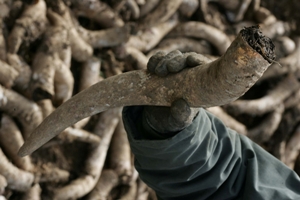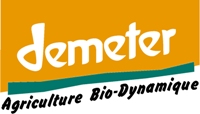Vinification Experience Day at Château Beau Rivage
- Categories :
- Wine
- Château Beau Rivage
- Bordeaux
- Wine Making
- Events
- Gourmet Odyssey
Last weekend, we had the pleasure of sharing it with our clients for the Vinification Experience Day at Château Beau Rivage, our Bordelaise partner based in Macau-en-Médoc. This third experience day closes the series for the 2010 Gourmet Odyssey Wine Experience at the Château (see previous posts for the Harvest Experience Day and the Wine Discovery Experience Day).
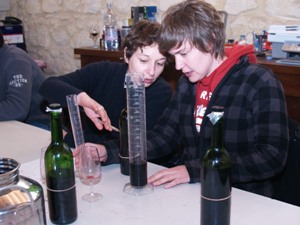
The aim this time was to learn more about the technical side of making wine, particularly the ageing and blending of the wine.
As with each wine experience day, it started directly in the vineyard, giving everyone the chance to see what shape their adopted vines are in. At this stage of the year, the pruning has already begun to prepare the vines for the 2011 harvest.
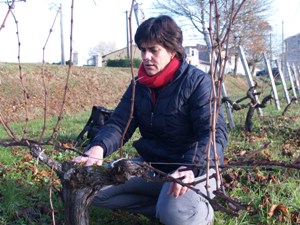
Christine Nadalié, the owner and winemaker, and Christophe Issartier who assists her, explained how to prune the vines and the importance of doing so to control the growth of the plant.
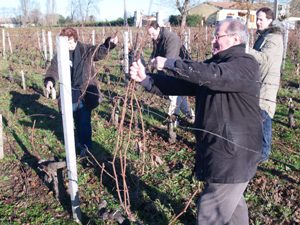
The main idea of the wine experience days is to get involved, so we helped Christine and Christophe "tirer les bois" which involved pulling the cut vine branches from the training wires. We set some aside to be dried, for use during the harvesters? barbecues next year, and left some in the middle of the rows to be crushed, enabling some of the nutrients to be returned to the soil.
The temperature being just above freezing in the vineyard, we were very happy to return to the relative warmth of the château to begin the main part of the day.
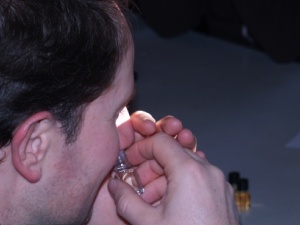
In preparation of the wine tasting sessions to follow, we started with a little exercise. With the help of small jars containing the aromas found in red wine and wood, we tried to identify the different smells, something which is more difficult than it seems! Often we know that we recognise the aroma, but find it more difficult to put a name to it (one in particular caused a big debate - smelly feet, leather, or burnt toast??)!
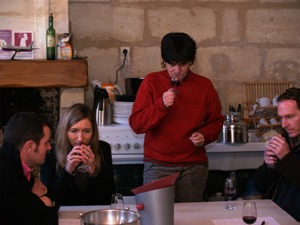
At Château Beau Rivage, each grape variety is aged separately in French or American oak barrels. Our first tasting session enabled us to discover the difference that each type of oak plays in influencing the taste of the wine. Two merlots from exactly the same plot, but aged in different types of oak barrels have completely different structures!
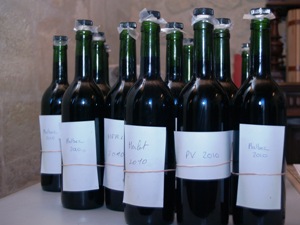
Next up, we blind tasted 4 of the grape varieties grown at Château Beau Rivage - merlot, cabernet sauvignon, malbec and petit verdot from the 2010 harvest, and tried to identify the characteristics of each one. We learnt for example that the cabernet sauvignon gives length to the wine, and that the merlot brings a fruity first impact, but little length.
These tastings brought on the appetite, so we shared a good meal accompanied by a selection of the estate's wines in front of the vines that were burning in the large fireplace.
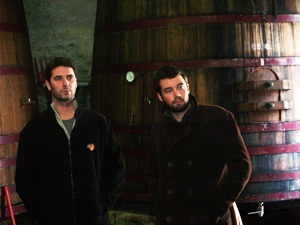
After a visit of the fermentation hall and the cellar to see where the vinification and ageing takes place, Christine unveiled her recipe for blending the Château Beau Rivage wine by mixing in front of us the different grape varietals in the measuring tubes.
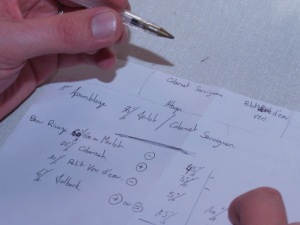
The professional's demonstration over, it was now our turn to split into small groups and blend our own wine, according to our tastes and the outcome that we desired to achieve. As is often the case with the magic of winemaking, there were a few surprises, as the taste changes depending on the grape varieties and percentages that are blended.
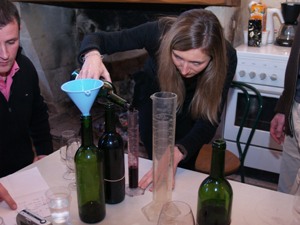
We finished by tasting each of the blends we had created, each with there own characteristics - some ready for drinking quickly, others better suited for laying down. One constant of the day was that it enabled us all to share a great moment, and to learn a little bit more about the art and science of winemaking.



